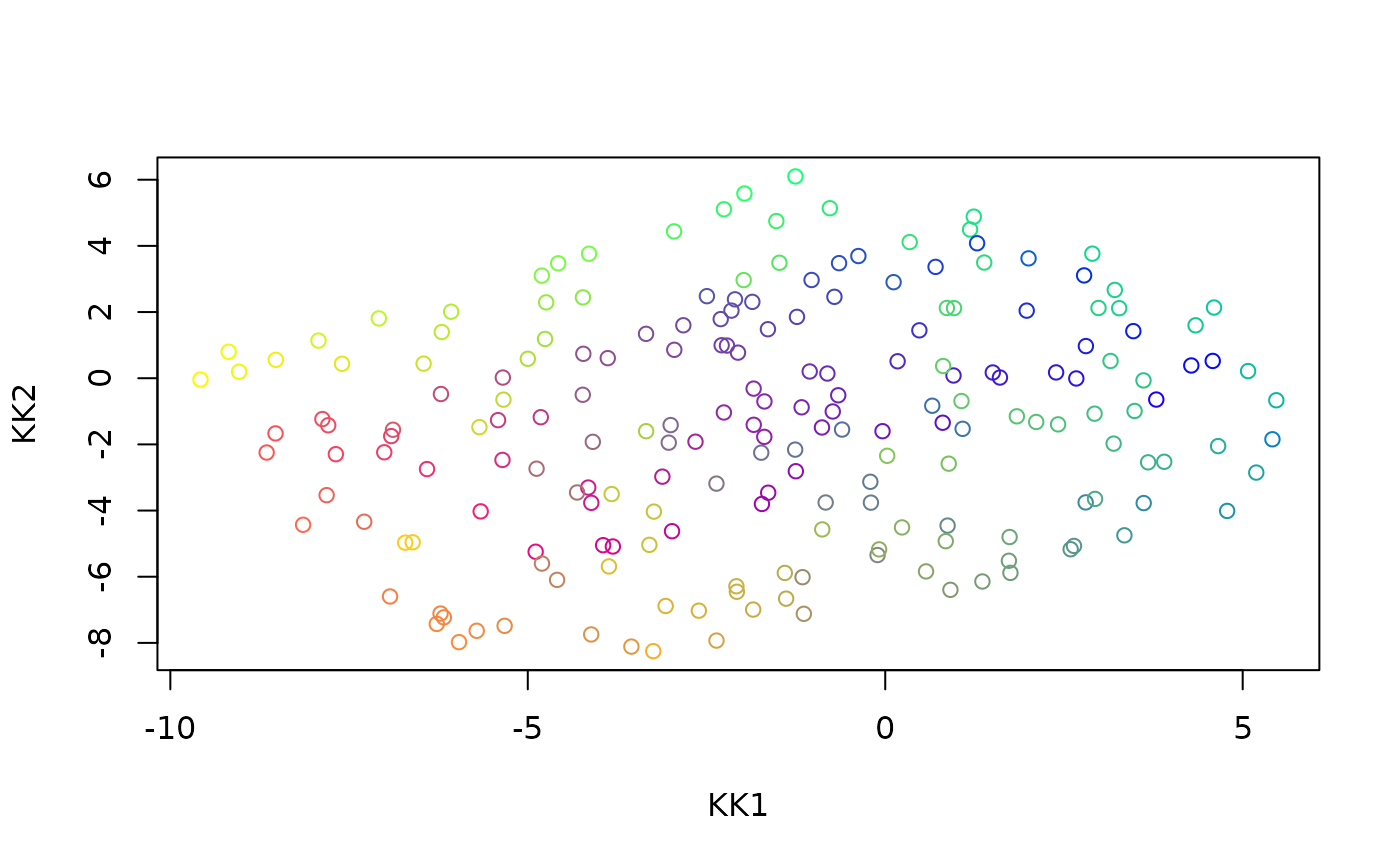An S4 Class implementing the Kamada Kawai Algorithm for graph embedding.
Details
Graph embedding algorithms se the data as a graph. Between the nodes of the graph exist attracting and repelling forces which can be modeled as electrical fields or springs connecting the nodes. The graph is then forced into a lower dimensional representation that tries to represent the forces betweent he nodes accurately by minimizing the total energy of the attracting and repelling forces.
Slots
funA function that does the embedding and returns a dimRedResult object.
stdparsThe standard parameters for the function.
General usage
Dimensionality reduction methods are S4 Classes that either be used
directly, in which case they have to be initialized and a full
list with parameters has to be handed to the @fun()
slot, or the method name be passed to the embed function and
parameters can be given to the ..., in which case
missing parameters will be replaced by the ones in the
@stdpars.
Parameters
KamadaKawai can take the following parameters:
- ndim
The number of dimensions, defaults to 2. Can only be 2 or 3
- knn
Reduce the graph to keep only the neares neighbors. Defaults to 100.
- d
The distance function to determine the weights of the graph edges. Defaults to euclidean distances.
Implementation
Wraps around layout_with_kk. The parameters
maxiter, epsilon and kkconst are set to the default values and
cannot be set, this may change in a future release. The DimRed
Package adds an extra sparsity parameter by constructing a knn
graph which also may improve visualization quality.
References
Kamada, T., Kawai, S., 1989. An algorithm for drawing general undirected graphs. Information Processing Letters 31, 7-15. https://doi.org/10.1016/0020-0190(89)90102-6
See also
Other dimensionality reduction methods:
DRR-class,
DiffusionMaps-class,
DrL-class,
FastICA-class,
FruchtermanReingold-class,
HLLE-class,
Isomap-class,
MDS-class,
NNMF-class,
PCA-class,
PCA_L1-class,
UMAP-class,
dimRedMethod-class,
dimRedMethodList(),
kPCA-class,
nMDS-class,
tSNE-class
Examples
if(requireNamespace(c("igraph", "coRanking"), quietly = TRUE)) {
dat <- loadDataSet("Swiss Roll", n = 200)
emb <- embed(dat, "KamadaKawai")
plot(emb, type = "2vars")
}
